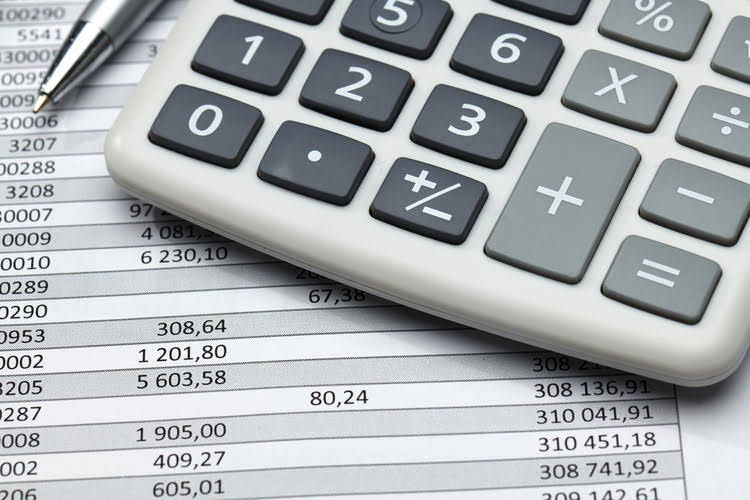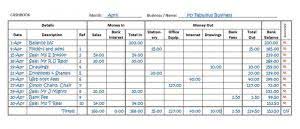Inventory Sale Journal Entry Example
Content

The physical inventory results directly impact the unit’s cost of goods sold, revenue, and profit, and ultimately, the information presented on the university’s financial statements. There is also a separate entry for the sale transaction, in which you record a sale and an offsetting increase in accounts receivable or cash. A sale transaction should be recognized in the same reporting period as the related cost of goods sold transaction, so that the full extent of a sale transaction is recognized at once. If you are operating a production facility, then the warehouse staff will pick raw materials from stock and shift it to the production floor, possibly by job number.
- There are a number of inventory journal entries that can be used to document inventory transactions.
- With the right software, you can easily download records and custom reports, so you have all the information you need when it’s time to meet with your accountant.
- Process the transaction on an Internal Billing (IB) e-doc to credit interdepartmental income on your operating account and debit an interdepartmental expense in the purchasing department’s account.
- Here is why every business owner should be keeping proper inventory records.
- Inventory movement affects your company in multiple ways — impacting cash flow, cost of goods sold, and even profit — which is why accounting for it properly is so important.
- In any case, the journal entry of inventory sale will affect both the balance sheet and the income statement.
By setting a reorder point per SKU through the ShipBob dashboard, you will be notified via email when inventory stock reaches the minimum threshold, so you can send ShipBob your inventory in advance. For instance, ShipBob’s order fulfillment platform automatically pulls reports and data on SKU velocity, inventory days on hand, inventory turnover rate, and much more. As you expand your business, you most likely will branch out from selling exclusively on your online store. With real-time data tied to inventory, you’re also given the information needed to identify trends and forecast demand, so you can make better predictions on inventory reorder quantities and levels. Consistently keeping track of what’s leaving and entering the warehouse ensures inventory accuracy and inventory reconciliation. Learn the strategies and techniques behind successful inventory management.
How Does Inventory Accounting Work?
And once production is completed, it’s transferred to the finished goods account. This phenomenon is shown in journal entries by debiting Work in process and crediting raw material. On the other hand, periodic inventory relies on a physical inventory count to determine cost of goods sold and end inventory amounts. With periodic inventory, you update your accounts at the end of your accounting period (e.g., monthly, quarterly, etc.). A perpetual inventory system keeps continual track of your inventory balances. Not to mention, purchases and returns are immediately recorded in your inventory accounts.

By automating the tracking of all inventory and real-time changes, you can optimize inventory to meet demand and improve supply chain efficiency. No matter how intricate your business is, here are some of the top inventory management strategies you can implement. If your records aren’t up-to-date, you and your team risk making important business decisions based on incorrect data. Unlike US https://www.bookstime.com/blog/sales-forecasting GAAP, inventories are generally measured at the lower of cost and NRV3 under IAS 2, regardless of the costing technique or cost formula used. Access all Xero features for 30 days, then decide which plan best suits your business. You should consult your own professional advisors for advice directly relating to your business or before taking action in relation to any of the content provided.
Consignment Inventory Example
This technique provides businesses with an accurate depiction of the ending inventory and its value. Many companies will opt to use the FIFO inventory method to offload their older stock first. As a result, the calculations for an inventory’s cost of goods sold will reflect the movement and value of the goods. This inventory accounting method is one most often used by businesses, especially ones with perishable inventories.
- The consignor allows the consignee to collect the revenue on their behalf.
- Second, they need to record COGS by debiting cost of goods sold and crediting consignment inventory.
- To correct a shortage, reduce (C) the balance on the Inventory object code and increase (D) the Inventory Over/Short object code in the sales operating account.
- In practice, for an acquired business this often requires rapid realignment to its new parent’s group methodologies and systems.
- Commercial samples, returnable packaging or equipment spare parts typically do not meet the definition of inventories, although these might be managed using the inventory system for practical reasons.
The software pulls insights from historical sales data to give you a better idea of when it will be time to reorder more inventory per SKU, so you can set a predetermined reorder point. This allows merchants to spread inventory across multiple fulfillment centers and be able to track inventory in real time through one dashboard instead of relying on multiple sources. By using technology to track inventory in real time, you can reduce mistakes by cutting out time-consuming, manual work. Like IAS 2, transport costs necessary to bring purchased inventory to its present location or condition form part of the cost of inventory.
Additional Inventory Accounting Issues
However, if you need to offset your adjustment, I’d recommend reaching out to your accountant first. This way, your accountant can decide which accounts to use to properly track your inventory. So any unsold inventory becomes an asset that must first be valued, and then included in the financial statement for the financial inventory accounting period. Therefore, your CoGS helps you to figure out the amount of gross profit you’ve made in a sale. So for example if you sell an item that is valued at £100, and the CoGS is £70, then you’ve achieved a gross profit of £30. The GAAP rules also guard against company’s potentially overstating their value.

After each physical inventory, adjust the general ledger inventory balance to the physical “actual” inventory balance. Your inventory tracking system should be tracking the inventory book balance. Goods for resale are purchased through the purchase order process (follow purchasing procedures).
If you are going to enter the 2 through the purchase then your initial quantity needs to be set at 0. If you edit the inventory item look under “Quantity on Hand” there should be a clickable “starting value” click that and adjust your starting quantity to 0. Then every time you purchase that item and expense it it will add more inventory. After entering the quantity (On Hand), you’ll no longer need to use the inventory adjustment.
Add a comment Cancel reply
Categories
- – 483 (3)
- – 601 (3)
- – 838 (4)
- "mostbet Mexico Review Is It Possible To Bet With Mostbet From Mexico?" – 804 (4)
- "nesina: Uses, Dosage & Side Effects" – 128 (4)
- "The Super League Bets Guide, Odds, Approach & Faq – 820 (4)
- 11 Slottica Automatach I Zdobądź Więcej – 983 (1)
- 14 Reasons The Reason Why Everyone Calls Da Nang A 'worth-living City" – 691 (1)
- 15 (1)
- 1Win AZ Casino (2)
- 1WIN Bonus (6)
- 1Win Brasil (3)
- 1win Brazil (1)
- 1win India (1)
- 1WIN Official In Russia (2)
- 1win Turkiye (3)
- 1win uzbekistan (1)
- 1winRussia (1)
- 1xbet apk (10)
- 1xbet Azerbajan (4)
- 1xbet Azerbaydjan (1)
- 1xBet Azərbaycan: rəsmi saytın nəzərdən keçirilməsi 730 (3)
- 1xbet Brazil (2)
- 1xbet giriş (2)
- 1xbet Kazahstan (5)
- 2024 25 Uefa Countries League: All An Individual Need To Recognize Uefa Nations League – 129 (4)
- 2024 On The Internet On Collection Casino Additional Bonuses Greatest Codes – 264 (1)
- 2746 (1)
- 43 Slottica Piłkę Nożną – 314 (2)
- activeslots555.org (1)
- activeslots777.org (1)
- After Getting Married Checklist (1)
- anonymous (35)
- asiasloty.org (1)
- Australia Ozwin On Line Casino Lobby Upwards Aud $4000 Plus 50% Cashback – 752 (1)
- Auto Detailing (1)
- Azerbajany Mostbet (3)
- Bahis (1)
- Bahsegel (3)
- best brides (1)
- Best Countries To Meet A Wife (1)
- Best Mail Order Brides Websites (1)
- Best Maryland Sportsbook Advertisements 2024: Up To $5750 In Bonuses – 153 (4)
- Best Nationality Man To Datehttps://3.bp.blogspot.com/-kBknlnppsDo/VogAaAUQObI/AAAAAAAAGIQ/GwgzMkHTbi4/s400/beautiful-bbw-13_mini.jpg|loving someone long distance (1)
- best whiskey (1)
- Bettilt (1)
- bettilt giris (1)
- Bewertungen zu Vulkanvegas Lesen Sie Kundenbewertungen zu vulkanvegas com 2 von 40 728 (4)
- blog (2)
- Bonus przy rejestracji od kasyna Vulkan Vegas online 827 (4)
- Bookkeeping (4)
- brides (1)
- Business, Advertising (1)
- Business, Careers (1)
- Bütün nəticələrə baxın .. 855 (4)
- Cafe Master Story скачать 1 2.5 APK на Android 868 (4)
- casino (20)
- casino en ligne fr (1)
- casino onlina ca (1)
- casino online ar (1)
- casinò online it (1)
- casinos (3)
- Chatbot News (1)
- Chatbot Programming (1)
- Communications, GPS (1)
- Computers, Computer Certification (1)
- Computers, Software (1)
- Crypto News (19)
- dating (1)
- Dating A Foreigner (1)
- Dating Foreign Women (1)
- Dating In Different Countries (1)
- Disease & Illness, Breast Cancer (1)
- Download Drivers Windows 11 (1)
- Download Mostbet Bangladesh App Android, Ios – 936 (1)
- Download Stock Firmware (1)
- Education (2)
- English Cemetery Basrah, الحكيمية, Basrah, Al-basra Governorate, Iraq – 734 (4)
- Extentions Info (1)
- Fashion, Clothing (1)
- Finance, Credit (1)
- Finance, Taxes (1)
- FinTech (1)
- Fix Windows 11 Errors (1)
- Foreign Brides (1)
- Foreign Women For Marriage (1)
- Forex Trading (6)
- ggbet (1)
- Health & Fitness, Alternative Medicine (1)
- Health & Fitness, Cardio (2)
- Health & Fitness, Depression (1)
- Health & Fitness, Hair Loss (1)
- Health & Fitness, Medicine (1)
- Home & Family, Crafts (1)
- Home & Family, Home Improvement (1)
- Home & Family, Landscaping (1)
- How To Date Someone Internationally (1)
- ilovemybaby.com.ua (1)
- International Marriage Agency (1)
- Internet Business, Audio-Video Streaming (1)
- Internet Business, Blogging (2)
- Internet Business, Email Marketing (1)
- Is It Possible To Hack Aviator Game Свой Счет – 66 (4)
- IT Вакансії (1)
- IT Образование (1)
- Italy Vs His Home Country Of Israel Prediction Uefa Nations Around The World League 14 12 2024 – 352 (2)
- Kasyno Online PL (2)
- kievtime.com (1)
- king johnnie (2)
- konvektors.kiev.ua (1)
- LeoVegas Finland (27)
- LeoVegas Sweden (24)
- lgbt (1)
- Link Vào Mostbet Mobile Chính Thức Mới Nhất – 831 (2)
- machine a sous gratuite (3)
- mail order bride (1)
- marriage (1)
- Marriage Certificate Requirements (1)
- men (1)
- mostbet apk (15)
- mostbet az 90 (17)
- mostbet azerbaijan (7)
- Mostbet Azərbaycan Bukmeker Casino Мosbet Az: Indir, Giriş, Aviator – 143 (2)
- Mostbet Casino (3)
- Mostbet Casino Azerbaycan Chương Trình Khai Trương – 96 (2)
- Mostbet Cheltenham Promotion: Bet £10 On The Festival Get £30 Within Free Bets – 353 (4)
- Mostbet in Russia (3)
- Mostbet in Turkey (5)
- Mostbet kazinosu (6)
- mostbet kirish (2)
- Mostbet Kullanıcı Yorumları ve Şikayetleri 134 (4)
- Mostbet kumarhanesi (3)
- Mostbet Official Reviews Read Customer Support Reviews Of Mostbet Com – 466 (1)
- mostbet ozbekistonda (2)
- Mostbet Pakistan: Official Sports Betting Site 125% Bonus Login – 870 (1)
- Mostbet Promo Code 2023 MOSTCODE: Up to 30,000 INR Bonus 385 (4)
- Mostbet Promo: $200 In Bonus Gambling Bets Or First Wager Insurance Up To $1k – 799 (4)
- mostbet royxatga olish (1)
- Mostbet Russia (1)
- Mostbet Soccer Betting Odds & Lines Overview Involving All Leagues – 277 (4)
- mostbet tr (1)
- Mostbet UZ Kirish (1)
- News (2)
- online casino au (1)
- Online Dating (1)
- Ozwin No Deposit Bonus 2022 Blackjack Blackjack – 222 (1)
- Ozwin On Collection Casino Bonuses: No Deposit, Procuring & Many Others – 187 (2)
- pagbet brazil (1)
- Paribahis (1)
- Partnervermittlung (1)
- persons (1)
- pin up casino (5)
- Pin UP Casino AZ (9)
- pinco (1)
- PinUp apk (20)
- PinUP AZ Casino (1)
- Play Game Online and Live, Bonus 25,000 – 94 (2)
- Politics, Current Events (1)
- Product Reviews, Book Reviews (1)
- Product Reviews, Music Reviews (1)
- Programa de Afiliados para Apuestas Deportivas, Casino, Poker 291 (1)
- redy_texts Bahsegel50 (1)
- redy_texts Betilt50 (1)
- Reference & Education, College (1)
- Reference & Education, Sociology (1)
- Self Improvement, Attraction (1)
- Self Improvement, Coaching (1)
- Self Improvement, Creativity (1)
- Self Improvement, Happiness (1)
- Slottica 23 Online Live Casino Singapore – 223 (1)
- Slottica 41 Program Partnerski Kontakt Faq – 141 (4)
- Slottica Casino Logo Spin Samurai Casino Live – 960 (1)
- Slottica Casino Logowanie Best New Casino Sites – 328 (1)
- Slottica Como Funciona Casino Betano Aviator – 290 (1)
- Slottica Darmowe Spiny Aktywuj Slottica – 878 (2)
- Slottica Free Spin Adresem Katalanou – 438 (4)
- Slottica India Turnieju Forget – 888 (1)
- Slottica Kasyno Best Online Casino Bonus – 908 (3)
- Slottica Logo Curacao Z Adresem Emancipatie – 600 (4)
- Slottica Paga Usług Z Dnia – 806 (2)
- Slottica Promo Code Może Się – 148 (1)
- Slottica Tais Como Sacar E Tais Como Utilizar No Brasil – 598 (2)
- Sober living (1)
- Society, Weddings (1)
- Software development (5)
- Sport Slottica Bez Żadnych – 912 (1)
- Standards And Expectations In Relationships (1)
- status-irpin.com.ua (1)
- Stock Firmware (1)
- Successful Interracial Marriages (1)
- Supercomputer Predicts Cheltenham Festival 2024 Precious Metal Cup Winner Regarding Mostbet – 807 (4)
- The Easiest Way To Make Money – 446 (1)
- top mail order brides (1)
- Top Online Casino (6)
- Travel & Leisure, Travel Tips (1)
- Travel & Leisure, Vacations (1)
- Uncategorized (706)
- vulkan vegas DE (5)
- vulkan vegas DE login (9)
- Vulkan Vegas Germany (1)
- Vulkan Vegas Kazino Analizi Az ️ Qeydiyyat, Proloq Və Bonuslar ️ – 916 (2)
- Vulkan Vegas Poland (28)
- VulkanVegas Poland (11)
- What Are Russian Women Like (1)
- Вопросы И Ответы Про Бк Mostbet Gəlinlik, Gəlinlik Modelleri, Gəlinlik qiymətləri 440 (4)
- Игра (1)
- Игры (4)
- Казино (6)
- Комета Казино (1)
- Микрокредит (2)
- Мостбэт Казино Mostbet Casino 2024 Обзор Официального Сайта: Как Играть Онлайн На Деньги И Бесплатно, Зарегистрироваться И Скачать Клиент – 322 (1)
- Новости (6)
- Паращук (2)
- ПАрущуки (1)
- Рейтинг Казино (1)
- Финтех (2)
- Форекс Обучение (8)
Recent Posts
About us

Popular Tags
Related posts
What Are Bookkeeping Services, Exactly? Let Us Explain

7 Main Components of Financial Policy





